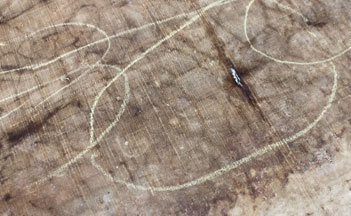Simon Blackwood Fine Arts
The Deposition – the re-lining process


| Previous | Restoring Oil Paintings | Next |
The painting is taken from its stretcher and the old, rotted linen lining has to be released from the original canvas. The animal glue used for the old lining had lost most of its adhesion and deteriorated due to excessive fluctuations in temperature and humidity returning it to a friable state – this had to be "dusted off" without disturbing the weave of original canvas.

The warping of the original support is treated from the reverse to return the weave of the canvas to its former shape before a new lining can be applied. The facing tissue is pliable enough to accommodate any movement to the canvas shape and the ground and pigment layers of the original.
The new Beva and linen lining was made using a vacuum table but due to the painting size a vacuum envelope had to be constructed allowing the painting to be fed through in stages.
Lining oil paintings is used as a last resort when the structure of the original has been adversely affected so that it is in danger of rapid deterioration under normal conditions or when the painting is likely to be stored in a potentially hazardous environment.
Please see the Tate Paper: Paintings on canvas: Lining and alternatives, by Steve Hackney. www.tate.org.uk/download/file/fid/7412